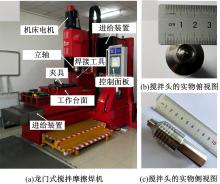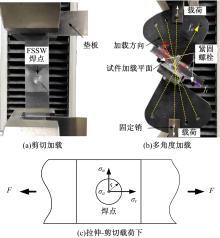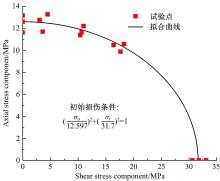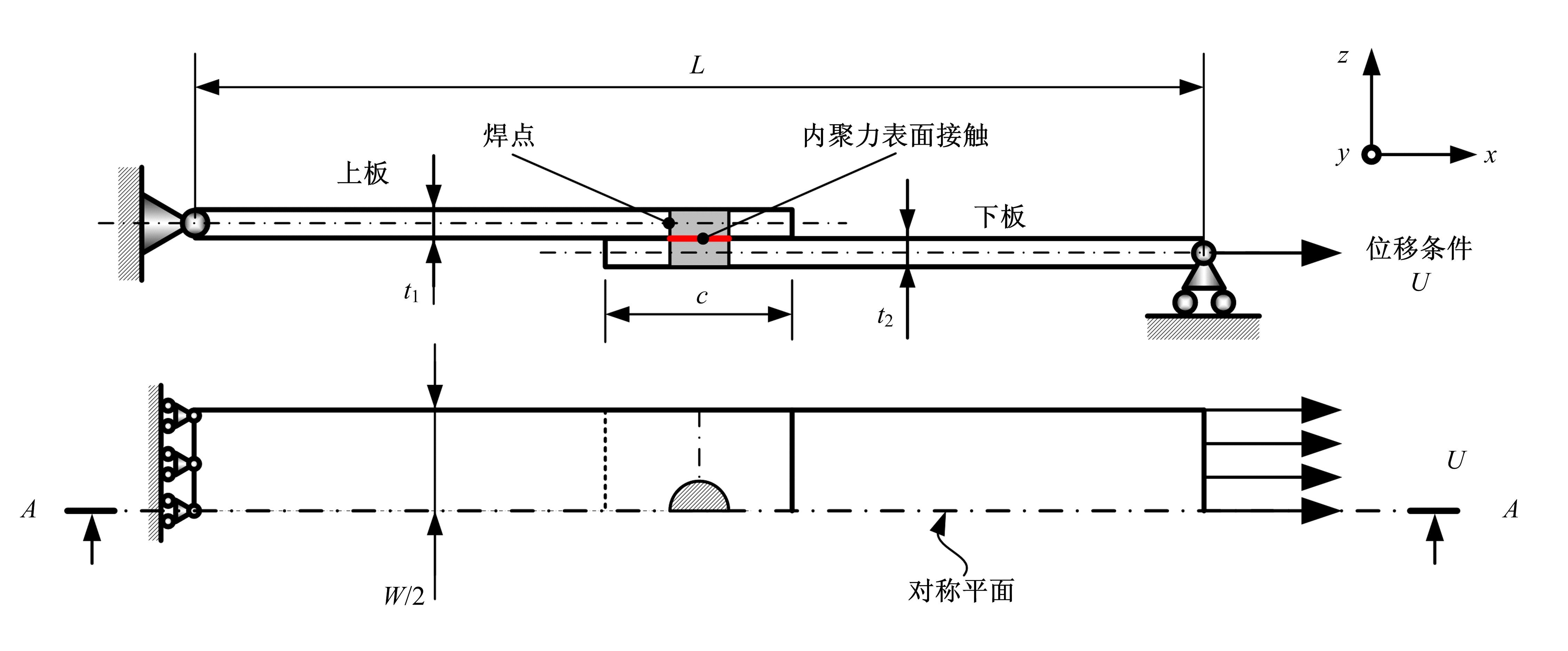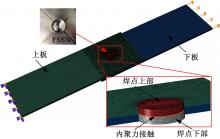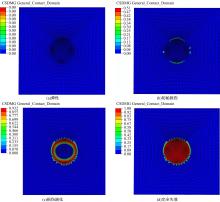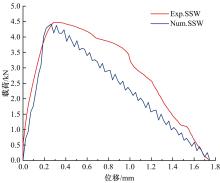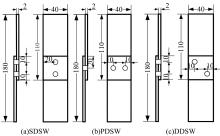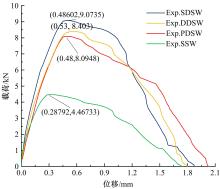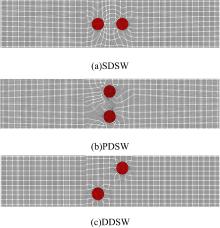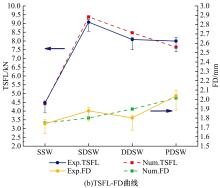Journal of Jilin University(Engineering and Technology Edition) ›› 2021, Vol. 51 ›› Issue (4): 1190-1197.doi: 10.13229/j.cnki.jdxbgxb20200503
Equivalent modeling of tensile-shear behavior for friction stir spot welding joints
Xin CHEN( ),Gui-shen YU,Biao ZHANG,Kai-xuan PAN,Li-fei YANG
),Gui-shen YU,Biao ZHANG,Kai-xuan PAN,Li-fei YANG
- State Key Laboratory of Automotive Simulation and Control,Jilin University,Changchun 130022,China
CLC Number:
- U41
| 1 | Shen Z, Ding Y, Gerlich A P. Advances in friction stir spot welding[J]. Critical Reviews in Solid State and Materials Sciences, 2020,45(6):457-534. |
| 2 | Kayode O, Akinlabi E T. An overview on joining of aluminium and magnesium alloys using friction stir welding (FSW) for automotive lightweight applications[J]. Materials Research Express, 2019, 6(11):190. |
| 3 | Ma Z Y, Feng A H, Chen D, et al. Recent advances in friction stir welding/processing of aluminum alloys: microstructural evolution and mechanical properties[J]. Critical Reviews in Solid State and Materials Sciences, 2018, 43(4): 269-333. |
| 4 | Ojo O O, Taban E, Kaluc E. Friction stir spot welding of aluminum alloys: a recent review[J]. Materials Testing, 2015, 57(7/8): 609-627. |
| 5 | Bagheri B, Abbasi M, Givi M. Effects of vibration on microstructure and thermal properties of friction stir spot welded (FSSW) aluminum alloy (Al5083)[J]. International Journal of Precision Engineering and Manufacturing, 2019, 20(7): 1219-1227. |
| 6 | Bagheri B, Rizi A A M, Abbasi M, et al. Friction stir spot vibration welding: improving the microstructure and mechanical properties of Al5083 joint[J]. Metallography Microstructure and Analysis, 2019, 8(5): 713-725. |
| 7 | Lacki P, Adamus K, Winowiecka J. The numerical simulation of aviation structure joined by FSW[J]. Archives of Metallurgy and Materials, 2019, 64(1): 387-392. |
| 8 | Chu Q, Yang X, Li W, et al. Numerical analysis of material flow in the probeless friction stir spot welding based on coupled Eulerian-Lagrangian approach[J]. Journal of Manufacturing Processes, 2018, 36: 181-187. |
| 9 | Eskandari M, Aval H J, Jamaati R. The study of thermomechanical and microstructural issues in dissimilar FSW of AA6061 wrought and A390 cast alloys[J]. Journal of Manufacturing Processes, 2019, 41: 168-176. |
| 10 | Li Z, Yue Y, Ji S, et al. Optimal design of thread geometry and its performance in friction stir spot welding[J]. Materials & Design, 2016, 94: 368-376. |
| 11 | Zhang B, Chen X, Pan K, et al. Thermo-mechanical simulation using microstructure-based modeling of friction stir spot welded AA6061-T6[J]. Journal of Manufacturing Processes, 2019, 37: 71-81. |
| 12 | Park K, Choi H, Paulino G H. Assessment of cohesive traction-separation relationships in ABAQUS: a comparative study[J]. Mechanics Research Communications, 2016, 78(B): 71-78. |
| 13 | Silva L D, Rodrigues T, Figueiredo M, et al. Effect of adhesive type and thickness on the lap shear strength[J]. The Journal of Adhesion, 2006, 82(11): 1091-1115. |
| 14 | Sadigh M. Enhanced failure load bearing in adhesively bonded strap repairs: numerical analysis and experimental results[J]. Journal of Failure Analysis and Prevention, 2019, 19(1): 182-192. |
| 15 | Bozzi S, Helbert-Etter A L, Baudin T, et al. Influence of FSSW parameters on fracture mechanisms of 5182 aluminium welds[J]. Journal of Materials Processing Technology, 2010, 210(11): 1429-1435. |
| 16 | Garg A, Bhattacharya A. On lap shear strength of friction stir spot welded AA6061 alloy[J]. Journal of Manufacturing Processes, 2017, 26: 203-215. |
| 17 | 马轶男, 陶汪, 陈彦宾, 等. 焊点排布方式对激光点焊-胶接复合接头断裂过程的影响[J]. 中国激光, 2013, 40(10):83-90. |
| Ma Yi-nan, Tao Wang, Chen Yan-bin, et al. Influence of spot arrangements on laser spot weld bonded joint fracture process[J]. China Laser, 2013, 40(10): 83-90. | |
| 18 | 马轶男. 激光点焊-胶接复合连接特性及接头断裂机制研究[D]. 哈尔滨: 哈尔滨工业大学先进焊接与连接国家重点实验室, 2015. |
| Ma Yi-nan. Laser spot welding-glue composite connection characteristics and joint fracture mechanism research[D]. Harbin: Advanced Welding and Connection of the National Key Laboratory,Harbin University of Technology,2015. |
| [1] | Da-feng SONG,Li-li YANG,Xiao-hua ZENG,Xing-qi WANG,Wei-zhi LIANG,Nan-nan YANG. Battery life optimization of hybrid electric vehicle based on driving cycle construction [J]. Journal of Jilin University(Engineering and Technology Edition), 2021, 51(3): 781-791. |
| [2] | Jia-xu ZHANG,Xin-zhi WANG,Jian ZHAO,Zheng-tang SHI. Path planning and discrete sliding mode tracking control for high⁃speed lane changing collision avoidance of vehicle [J]. Journal of Jilin University(Engineering and Technology Edition), 2021, 51(3): 1081-1090. |
| [3] | Ren HE,Xiao-cong ZHAO,Yi-bin YANG,Jian-qiang WANG. Man⁃machine shared driving model using risk⁃response mechanism of human driver [J]. Journal of Jilin University(Engineering and Technology Edition), 2021, 51(3): 799-809. |
| [4] | Qiang SONG,Dan-ting SUN,Wei ZHANG. Shift nonlinear modeling and control of automated mechanical transmission in pure electric vehicle [J]. Journal of Jilin University(Engineering and Technology Edition), 2021, 51(3): 810-819. |
| [5] | Bo WANG,Yang-yang HE,Bing-bing NIE,Shu-cai XU,Jin-huan ZHANG. Abdominal injury of vehicle occupant in underbody blast events [J]. Journal of Jilin University(Engineering and Technology Edition), 2021, 51(3): 792-798. |
| [6] | Wei-min ZHUANG,Peng-yue WANG,Rui-juan GAO,Dong-xuan XIE. Effect of hot forming on static mechanical properties of AA5754 aluminum alloy [J]. Journal of Jilin University(Engineering and Technology Edition), 2021, 51(3): 847-854. |
| [7] | Shou-tao LI,Rui WANG,Jing-chun XU,De-jun WANG,Yan-tao TIAN,Ding-li YU. A vehicle collision avoidance control method based on model predictive composite control [J]. Journal of Jilin University(Engineering and Technology Edition), 2021, 51(2): 738-746. |
| [8] | Wei-da WANG,Yan-jie WU,Jia-lei SHI,Liang LI. Electronic hydraulic brake power system control strategy based on driver intention recognition [J]. Journal of Jilin University(Engineering and Technology Edition), 2021, 51(2): 406-413. |
| [9] | Guo-ying CHEN,Jun YAO,Peng WANG,Qi-kun XIA. Stability control strategy for rear in⁃wheel motor drive vehicle [J]. Journal of Jilin University(Engineering and Technology Edition), 2021, 51(2): 397-405. |
| [10] | Fang-wu MA,Hong-yu LIANG,Qiang WANG,Yong-feng PU. In-plane dynamic crushing of dual-material structure with negative Poisson′s ratio [J]. Journal of Jilin University(Engineering and Technology Edition), 2021, 51(1): 114-121. |
| [11] | Dao WU,Li-bin ZHANG,Yun-xiang ZHANG,Hong-ying SHAN,Hong-mei SHAN. Visual detection method for vehicle braking time sequence based on slip rate identification [J]. Journal of Jilin University(Engineering and Technology Edition), 2021, 51(1): 206-216. |
| [12] | En-hui ZHANG,Ren HE,Wei-dong SU. Numerical analysis of oil liquid sloshing characteristics in fuel tank with different baffle structures [J]. Journal of Jilin University(Engineering and Technology Edition), 2021, 51(1): 83-95. |
| [13] | Lu XIONG,Yan-chao WEI,Le-tian GAO. Inertial measurement unit/wheel speed sensor integrated zero-speed detection [J]. Journal of Jilin University(Engineering and Technology Edition), 2021, 51(1): 134-138. |
| [14] | Ji-qing CHEN,Qing-sheng LAN,Feng-chong LAN,Zhao-lin LIU. Trajectory tracking control based on tire force prediction and fitting [J]. Journal of Jilin University(Engineering and Technology Edition), 2020, 50(5): 1565-1573. |
| [15] | Zhi-gang YANG,Ya-jun FAN,Chao XIA,Shi-jun CHU,Xi-zhuang SHAN. Drag reduction of a square⁃back Ahmed model based on bi⁃stable wake [J]. Journal of Jilin University(Engineering and Technology Edition), 2020, 50(5): 1635-1644. |
|
||






